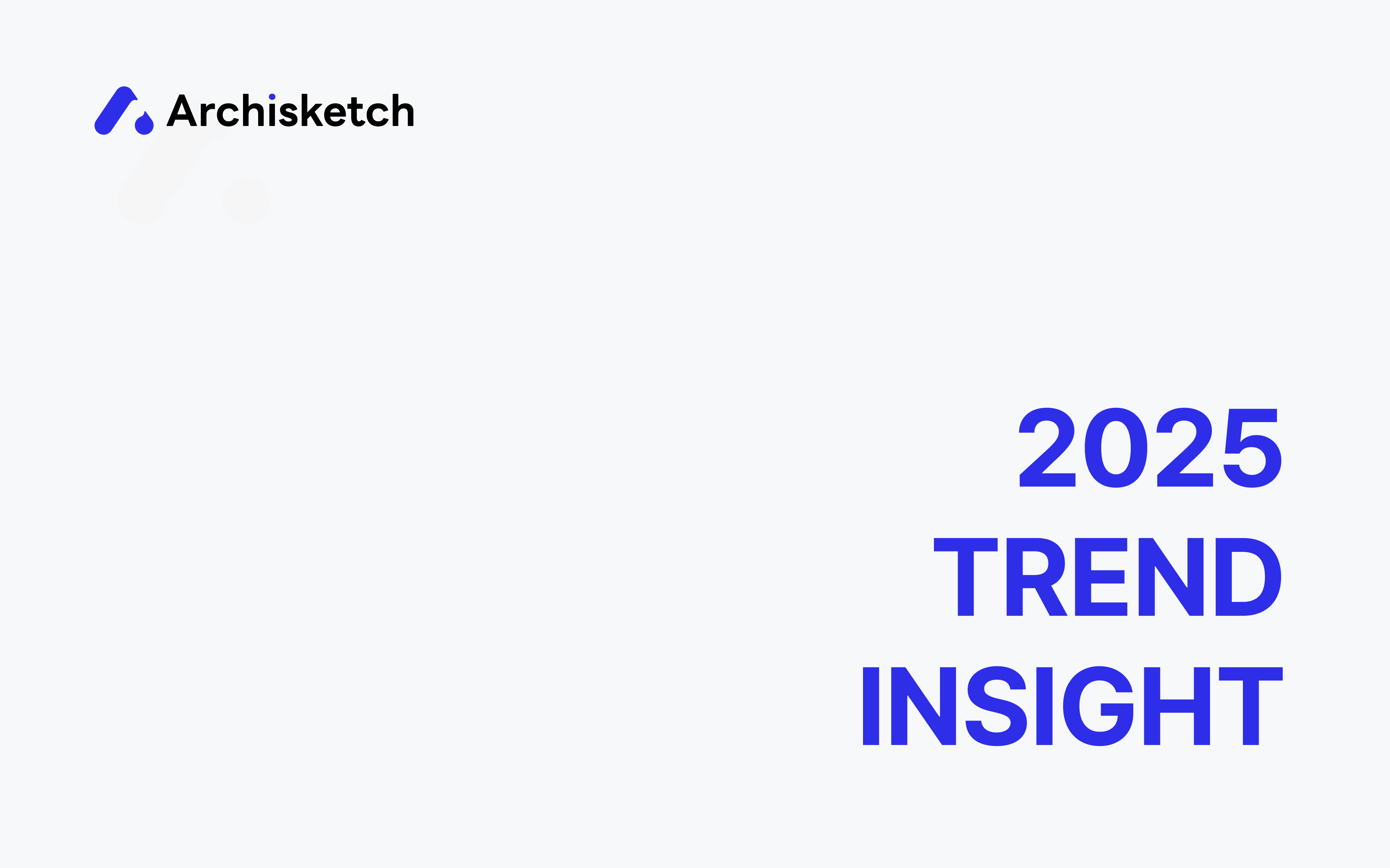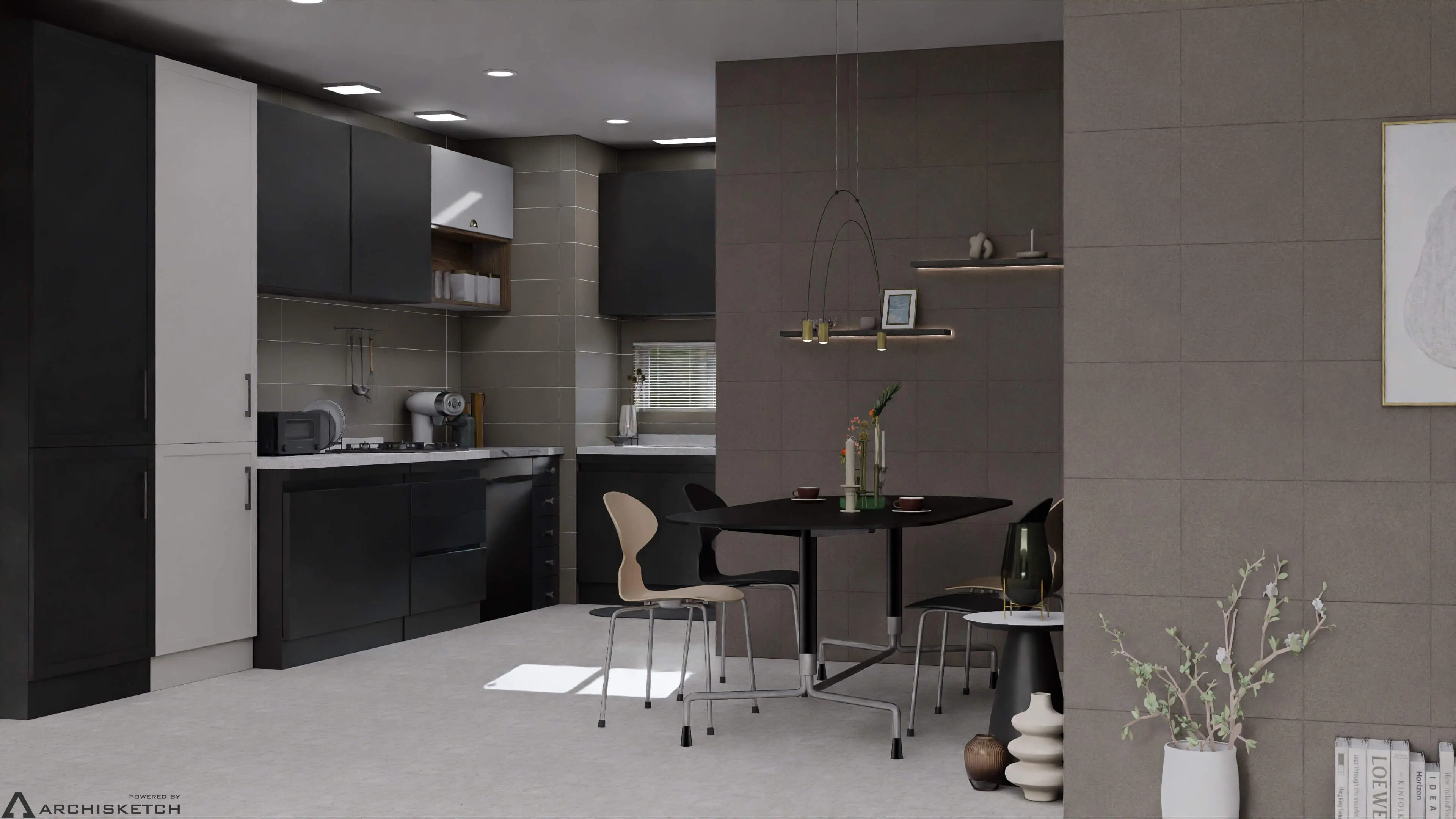인사이트
국내 가구 시장 전망 및 동향ㅣ치열한 경쟁에서도 살아남는 비결
by Archisketch

The Housing Slump and U.S. Furniture Industry Outlook
The furniture industry is closely tied to the housing economy. When housing transactions slow, moving demand decreases, and naturally, furniture demand falls as well.
During the COVID-19 pandemic, the industry experienced an unexpected boom as people spent more time at home. However, since the end of the pandemic in 2023, the situation has reversed. Rising inflation, interest rates, and raw material and logistics costs have pushed the furniture industry into stagnation.
Real estate platform Zigbang analyzed official transaction data from Korea’s Ministry of Land, Infrastructure and Transport. Results showed that by January 2025, 44.9% of apartment transactions were “declining sales”, meaning homes were sold at prices lower than before. This trend has persisted since August 2024 and is not temporary.
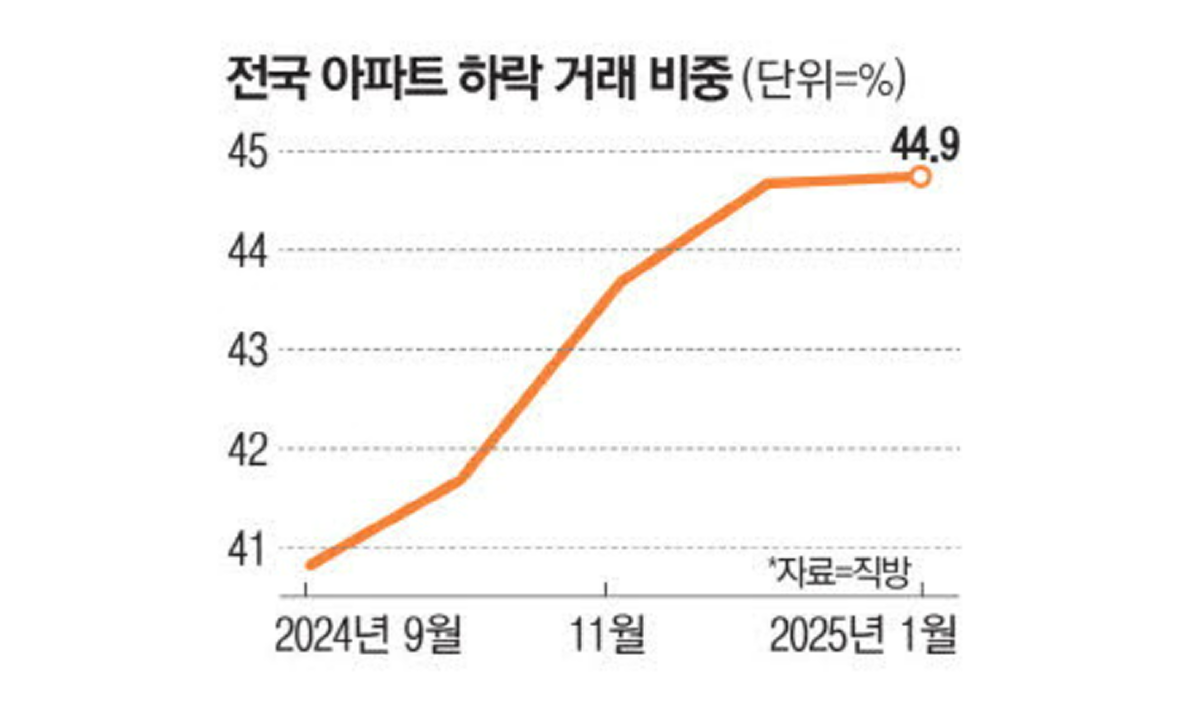
Source: Zigbang – Analysis of Ministry of Land, Infrastructure and Transport real transaction prices
Performance and Strategies of Major Furniture Companies
In 2023, online furniture sales temporarily rebounded. But by 2025, the industry again faced the weight of the real estate slump. Let’s examine the financial results of Korea’s leading furniture companies, Hanssem and Hyundai Livart.
Hanssem: Q1 2025 revenue of $332M USD (down 8.7% YoY)
Hyundai Livart: Q1 2025 revenue of $328M USD (down 13.3% YoY)
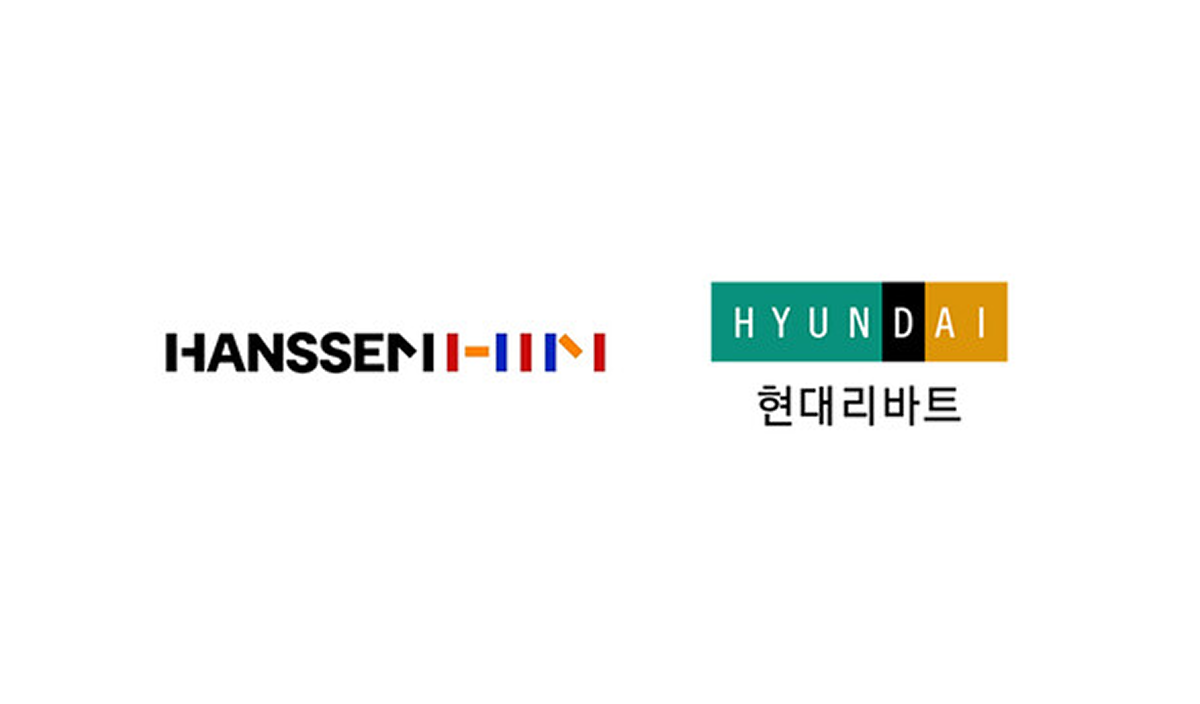
Both companies saw a decline in furniture demand due to the real estate and construction downturn. Their B2B built-in furniture sales dropped sharply, especially for Hyundai Livart, where over 70% of revenue comes from B2B contracts.
With fewer new apartment completions, built-in furniture revenue plummeted. According to analyst Park Sera from Shinyoung Securities, Hyundai Livart is expected to remain stuck at around $225M–$240M USD in quarterly revenue through 2027.
Premium Strategies: Limited Solutions in a Tough Market
With the real estate and construction sectors in decline, the outlook for the Korean furniture industry remains grim. Some companies have tried to counteract this by expanding from B2B to B2C markets and emphasizing premium product lines.
Hanssem: Promoting its premium kitchen line Kitchen Bach
Hyundai Livart: Strengthening its Livart Meister Collection
Hanssem has seen positive results — Kitchen Bach sales in July 2025 rose 77.2% YoY.
But premium strategies also have limitations. Today, the consumer market is dominated by 20s–30s households and 1–2 person homes. According to Statistics Korea, single-person households represented 35.5% of all households in 2023. Of those, 18.6% were under 29 years old and 17.3% were in their 30s — together 36.5%.
A 2025 Seoul city report projected that 42% of households in Seoul will be single-person by 2025, reflecting rapid growth.
While premium furniture buyers are typically in their 30s–50s with higher purchasing power, the majority of younger households lack the budget for high-end furniture. Combined with weak consumer sentiment amid economic uncertainty, the mainstream consumer base tends to favor affordable, value-driven furniture over premium products.
A Turning Point: Insights from Furniture Industry Trends
So how can companies survive this downturn? A shift in mindset is required. Beyond the dichotomy of “high-end vs. low-cost,” brands need to reimagine their approach.
Hints come from the 2025 Real Estate Trend Survey conducted by Heerim Architects, R2 Korea, and Gallup Korea, which identified seven major housing trends. Two are particularly relevant:
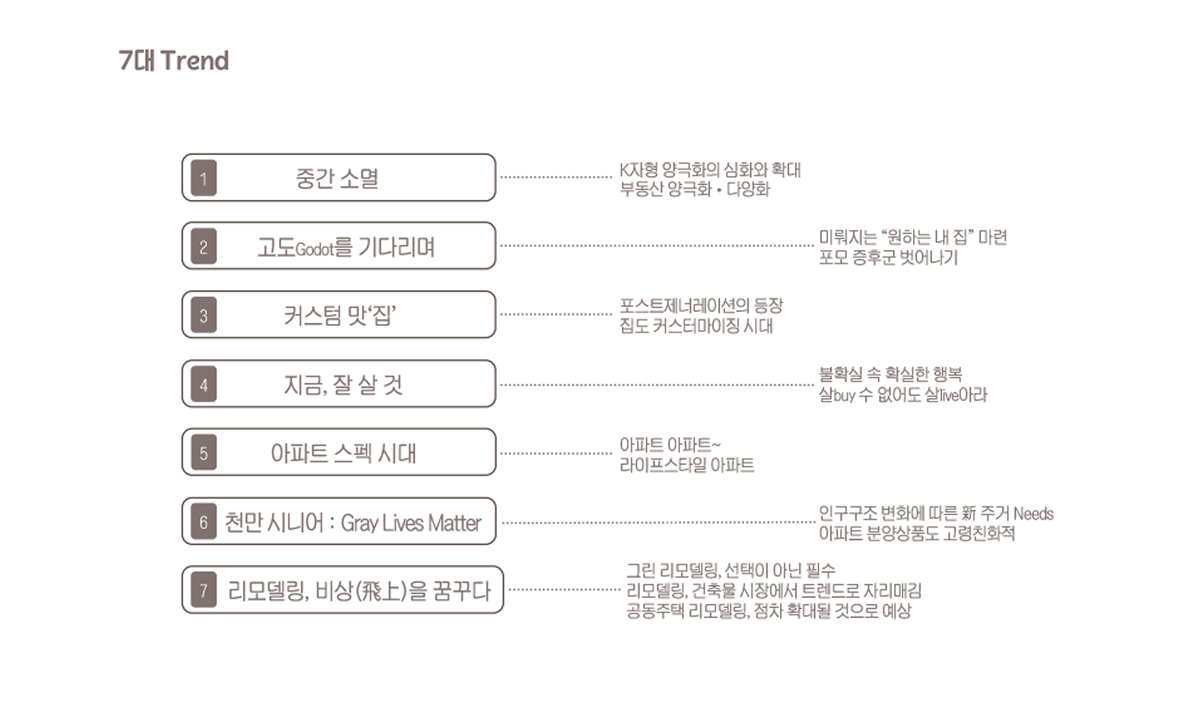
Source: 2025 Real Estate Trend Survey
1. Custom Living (“Taste of Customization”)
The number of 1–2 person households is growing, but within this demographic, lifestyles are highly diverse:
A young woman living alone during university
A single man in his early 30s
A dual-income couple without children in their late 30s
Empty-nest retirees pursuing hobbies
This diversity reflects the rise of post-generation consumers, who prioritize individual lifestyles over age or family structure. As a result, personalized interiors are on the rise.
A major trend is flexible interior design. Unlike the past, when apartment layouts were fixed, today’s designs allow for flexible partitions that can adapt to changing needs — for example, moving a wall to expand a room or splitting it into two.
Hyundai Construction’s “House of THE H” concept exemplifies this, showcasing modular furniture that transforms bedrooms into gyms or studies. Recognized as a future housing model, it won the 2025 Red Dot Design Award.
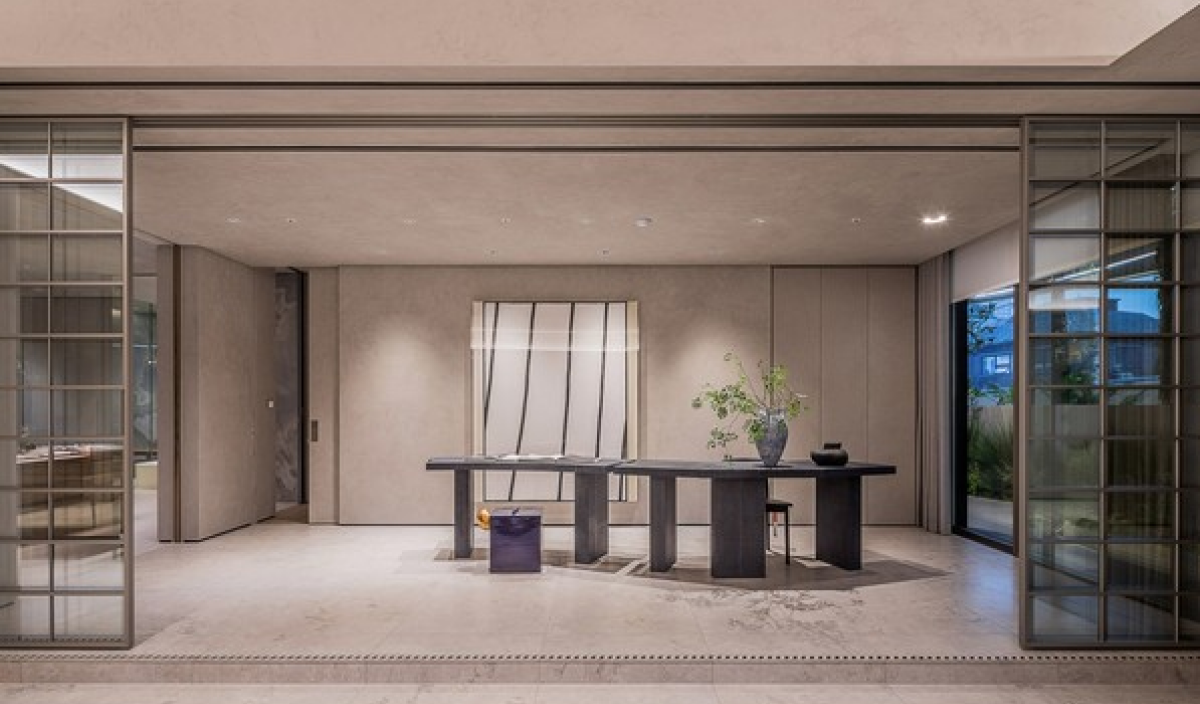
Source: Hyundai Construction – THE H All Life Care House with variable interiors
2. Living Well Now
In today’s high-cost, uncertain era, consumers prioritize current happiness over future investment. Surveys show increased spending on leisure activities such as travel (+6.7pp), gym memberships (+5.3pp), and DIY interior projects (+1.6pp).
At the same time, fewer people view homes primarily as investment assets (down 8.2pp). Instead, more see housing as an expression of independence, personality, or hobbies.
This shift has fueled companies like Bucketplace (Today’s House), which achieved $216M USD in 2024 revenue. Their success lies in content-driven commerce: users upload photos of their decorated homes, inspiring others to buy similar products.
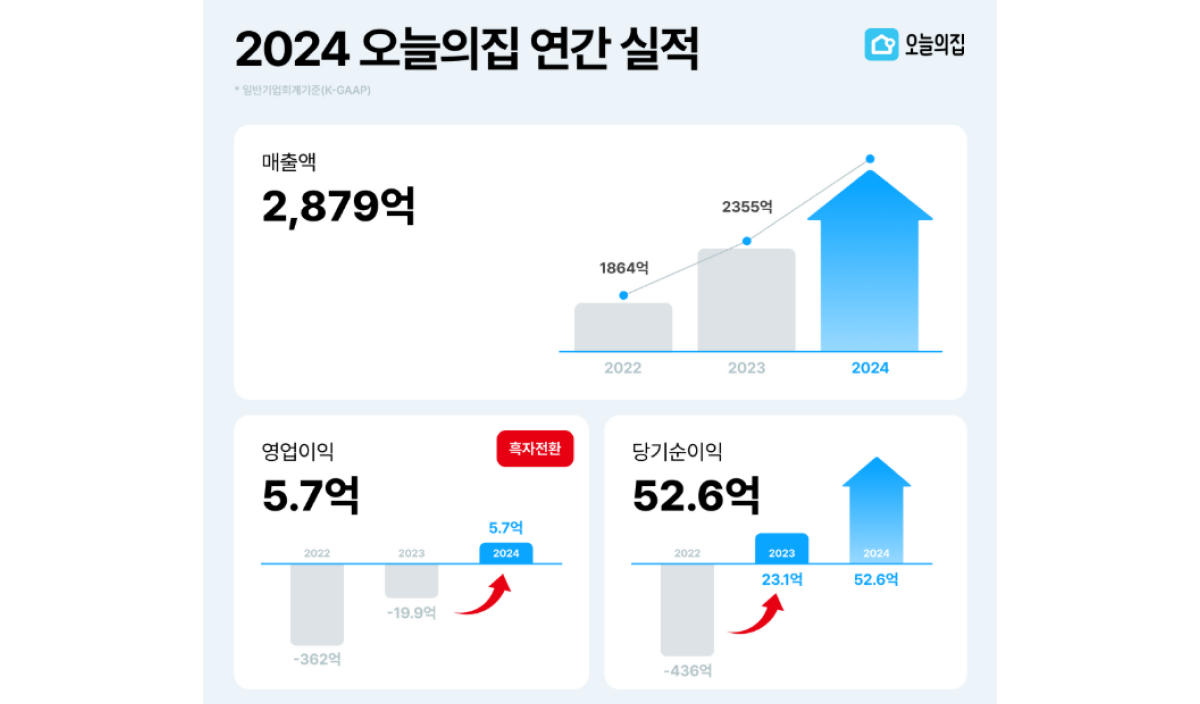
Source: Today’s House
The Role of AI in Reshaping the Furniture Industry
Even in a stagnant furniture industry, AI offers a ray of hope.
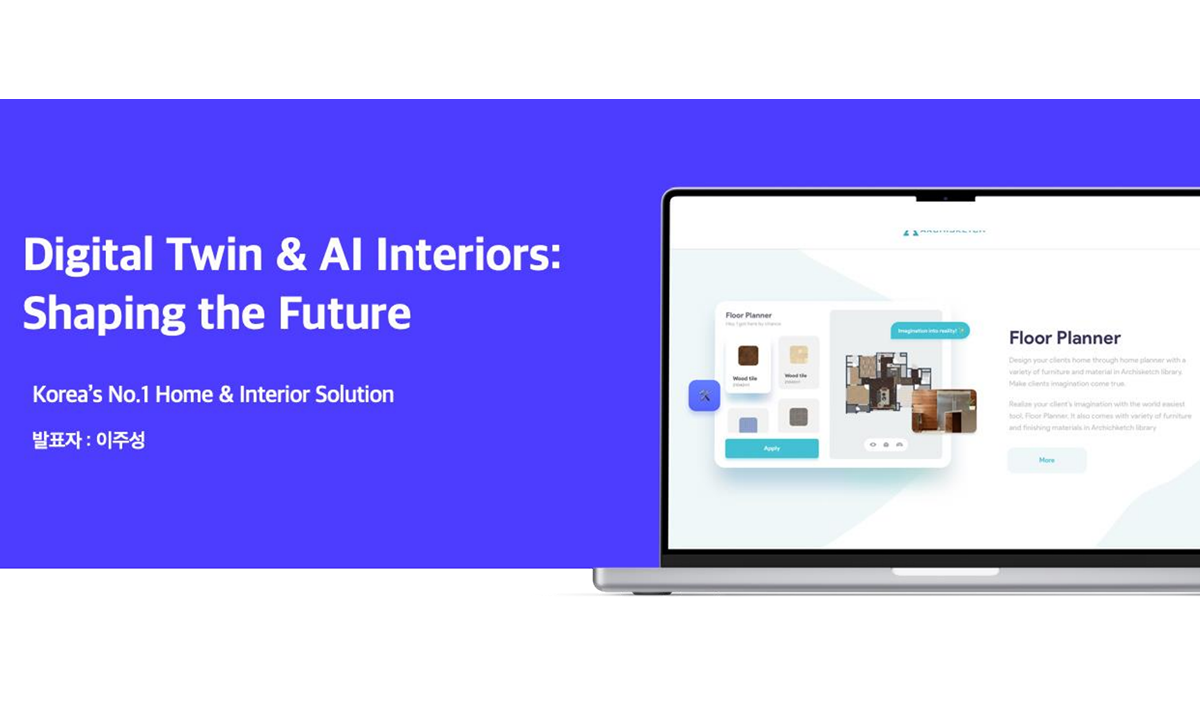
At Korea Build Week 2025, Archisketch CEO Joo-Sung Lee shared insights on leveraging AI to overcome industry challenges.
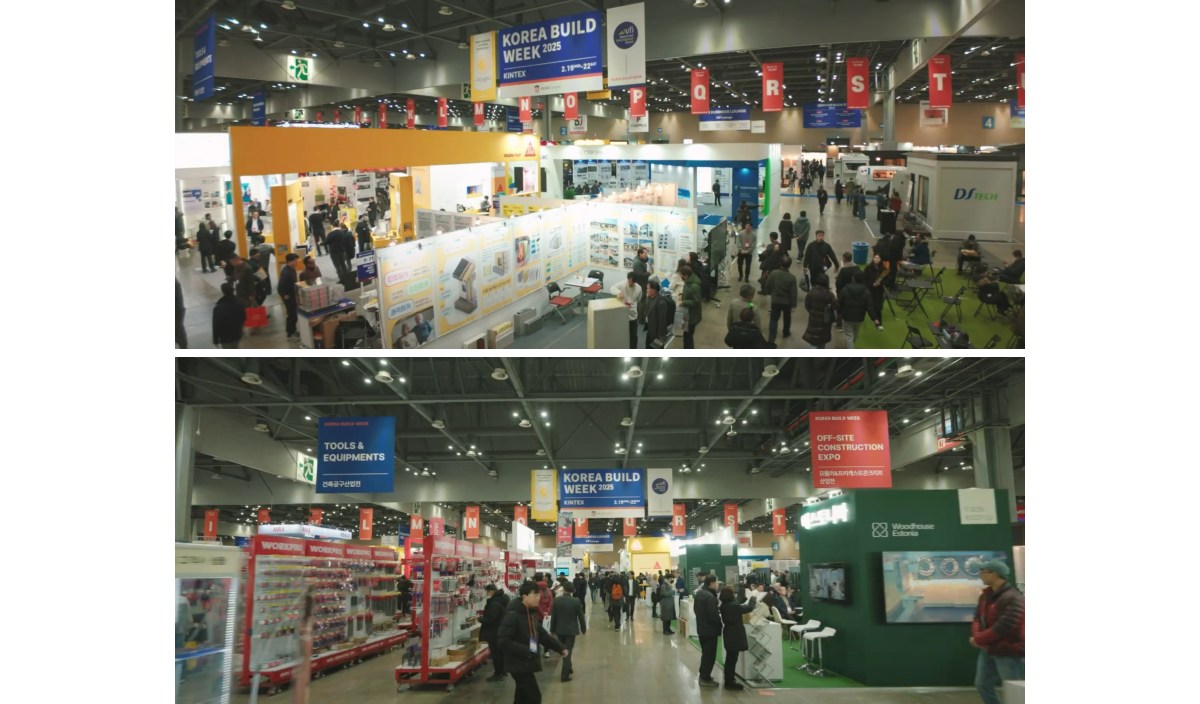
Source: Korea Build Week YouTube
AI Interior Consultant – The “ChatGPT of Furniture”

Globally, ChatGPT has become the most popular AI tool, assisting with research, reports, and even counseling. Powered by LLM (large language models), it analyzes user input and delivers tailored responses.
When applied to interiors, this evolves into an AI interior consultant. Instead of static catalogs, the AI generates 3D simulations of a client’s actual home, complete with furniture, appliances, and cost estimates.
For example, a customer may request:
Design a dark wood-toned living room for a 700 sq. ft. apartment, budget $3,700, and I prefer fabric sofas over leather.
The AI would instantly generate multiple design options and layouts.
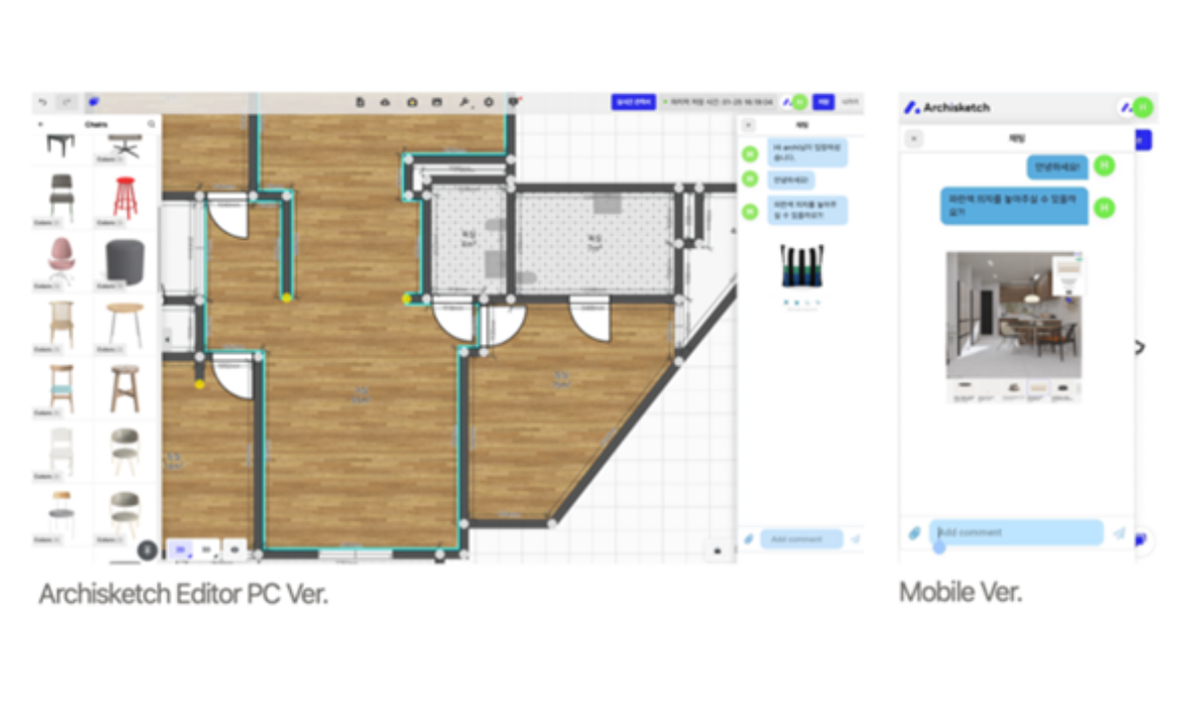
Archisketch’s AI Workflow Vision
Archisketch envisions an ideal workflow that integrates AI:
Design Research → 3D Modeling → Blueprint Design → AI Interior Recommendations → Content Creation → Project Management
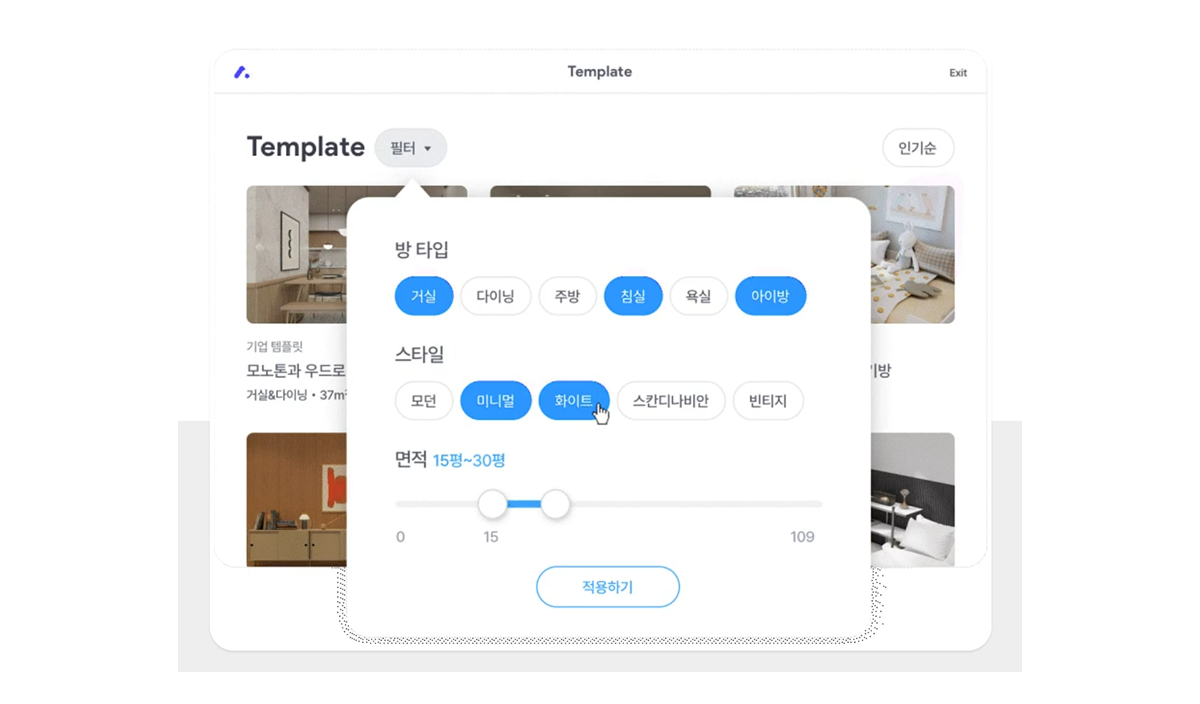
Currently, Archisketch already enables clients to import floor plans and furnish homes in 3D. In the future, AI will allow customers to input prompts and receive tailored interior proposals instantly, boosting both satisfaction and conversion rates.
As CEO Lee states:
AI can redefine the very structure of the interior industry.
The future will be a contest not of “human vs. human”, but “human vs. human+AI.”
Conclusion
In today’s challenging U.S. furniture industry outlook and trends, Archisketch provides the tools to stand out. By harnessing AI, your company can survive fierce competition and emerge as a leader in the interior market.
👉 Want to capture Millennials and Gen Z to become a market leader? Adopt Archisketch today.
Archisketch
Fast, Easy, Reliable
share this post

